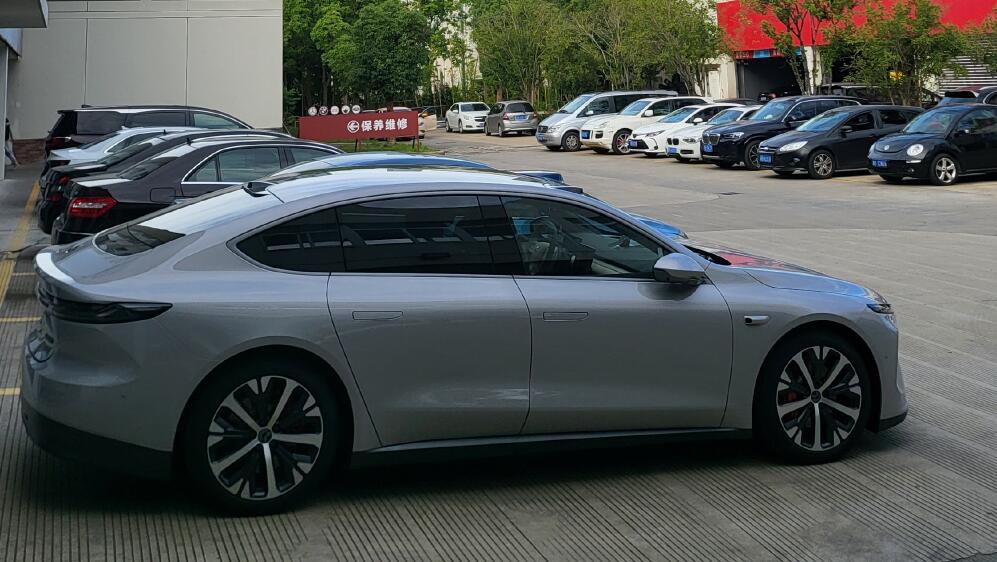Edison Yu's team explains perfectly what Weineng is, why it was formed and how it relates to Nio.

(Image credit: Weineng / Mirattery)
Short-seller Grizzly Research said in a report released Tuesday that they believe Nio is likely using an unconsolidated affiliate, Wuhan Weineng, to inflate revenue and profitability, putting the operator of Nio's battery assets in the spotlight.
CnEVPost has closely tracked Weineng's business progress, and if you wish to read a historical report on the company, you can click here.
We have yet to fully summarize why Weineng exists and how it relates to Nio in a single article, but fortunately, Deutsche Bank analyst Edison Yu's team did a perfect job of this in a research note on Thursday.
As background, as we mentioned in yesterday's post, Yu's team said that in their opinion, some of the numbers Grizzly mentioned were inaccurate and elements of Nio's business model have been very misconstrued.
"We do not see this detracting from the product super cycle Nio is embarking on and expect these concerns to fade fairly quickly," Yu's team said.
In addition, Weineng actually has an official English name, Mirattery, though Grizzly's report and Wall Street analysts have used the company's pinyin directly as its English name. We'll continue to use Mirattery in our future coverage.
Here is some background on Weineng as shared by Yu's team.
What is Weineng?
Wuhan Weineng Battery Asset Co., Ltd is a financing entity formed in 2020 by Nio, CATL, Hubei Science & Technology Investment Group and Guotai Junan International.
Each party initially invested 200m RMB, leading to 25% ownership. Nio invested another 270m in August of 2021 as part of a Series B but was diluted down to around 20% ownership.
Weineng continued to seek additional funding through ABS/ABN channels as its capital needs increased.
Why was it formed?
The main purpose of Weineng is to provide financing for Nio's Battery-as-a-Service (BaaS) program.
For background, BaaS allows the customer to purchase the vehicle without the battery at a lower price and instead pay a monthly subscription fee. Management indicated in past quarters the take-rate was around 50% and our sense is that it likely stabilized around there.
By feeding batteries to Weineng, Nio reduces its cash burden, similar to a traditional OEM leveraging a captive finance arm.
Hence, we do not view this is as a controversial practice and suspect others likely take a similar approach (sometimes referred to as a "battery bank").
From an investment perspective, the profile of Weineng naturally appeals to a different type of investor than Nio stock (i.e., stable/income vs. growth).
Relationship with Nio
Operationally, Nio sells the battery to Weineng who then receives a subscription payment from the user. The customer would pay for the vehicle (without battery) directly to Nio and sign a contract with Weineng.
Nio recognizes the full value upfront once the vehicle is delivered, therefore, it shows up the same as a non-BaaS sale.
After the purchase, Nio has some service agreements with Weineng (e.g., pack monitoring, maintenance) and is responsible for defaults by BaaS users, both of which have had an immaterial impact on financials.
How many batteries are out there?
There are 3 types of batteries in Nio's ecosystem: regular (sold as part of vehicle to customer), BaaS (owned by Weineng), and spare (placed at swap stations to facilitate convenient access).
We estimate there are roughly 10k-11k spare batteries (~1,000 stations x 10-11 batteries per station, factoring in mix of gen-1 and gen-2).
As of 3Q21, we estimate there were approximately 40k BaaS subscribers. This assumes a <50% take-rate on ~84k deliveries from 4Q20 to 3Q21, consistent with management's commentary and Weineng's filing.
The 19k BaaS subscriber number cited by the short report only factors in the amount included in the ABS/ ABN offering so it is not an accurate comparison.



